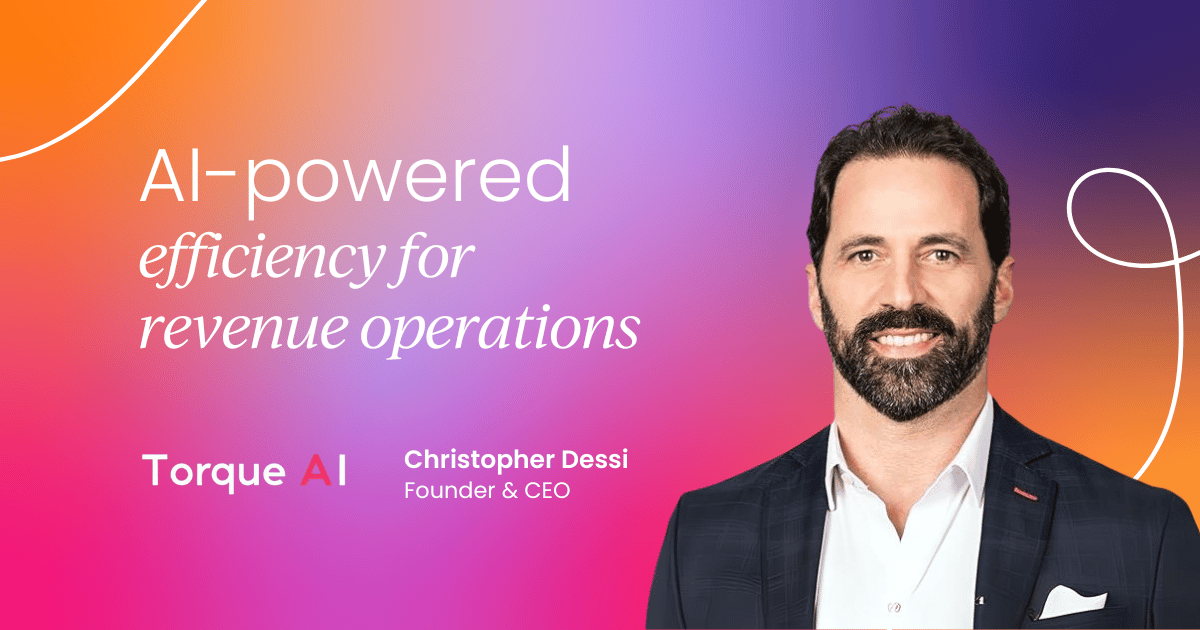So…
We’ve covered what revenue forecasting is, and how to do your own revenue forecast. We’ve also covered the challenges you’re likely to face, and what forecasting metrics you need to keep an eye on if you want your forecasts to get better (rather than worse) over time.
But what about the practical side of improving accuracy over time?
After all, businesses love growth. If you can’t demonstrate that you’re adding more value to the business over time, you’ll struggle to progress in your career.
And as one of the most strategically beneficial deliverables you can produce for your leaders, demonstrating progress in forecast accuracy (and therefore its utility to the business) will pay massive dividends for you as a revenue operations professional.
What is forecast accuracy?
To improve forecast accuracy, we first need to know what we’re dealing with.
At our Revenue Forecasting Summit a few months ago, Anjali Chawla, Head of Strategy & Sales Operations, Europe at Nokia, defined forecast accuracy for us:
“To answer what forecast accuracy is, let’s think about what it is that we forecast. We forecast those metrics that point towards business health or business growth.” These might be sales, or revenue. But the point is this: we want to be reasonably sure that what we think will happen in the future will actually happen.
1 - Forecast accuracy relates to deal complexity
The more complex your business model, and the types of deals you’re closing, the more metrics you have to track (and the more accurate that tracking needs to be).
Dan Leva, Senior Vice President, Revenue Operations at Cielo Talent, delineates a forecast into three components:
- Bookings
- Revenue
- Renewals
Bookings: For bookings, inputs come from the sales reps. They’re looking at everything coming into the pipeline, as well as metrics including deal size, the types of products reps are selling, time to sale, etc.
Revenue: Once they win a deal, Dan’s teams split things out into two categories: services, and tech (or “product”). Technology licenses and products are tied to more stable revenue numbers than service fulfillment.
Renewals: When it comes to renewals, Dan looks at historical renewal rates. These are critical to understanding risks to existing accounts. You can’t put a reasonable number on what the future value of your existing customers might be if you don’t have a solid grasp of your renewal rates.
What to do with this information
Previous articles in this series outline a very solid approach to higher-level sales forecasting for smaller businesses. At the enterprise level, and for any business that wants to take its forecasting accuracy to the next step, you need to start incorporating every figure that affects revenue.
If, currently, you’re only looking at projected bookings, start to explore things like:
- Renewals.
- Revenue stability by contract type.
Why service fulfillment gets complicated
Service fulfillment gets complicated because it might not be your business fulfilling every aspect of the service. It’s totally normal to subcontract different aspects of the work out to other businesses.
This adds complexity, and adds elements into the mix that are out of your control. This can lead to slipped deadlines for ultimate fulfillment. As a result, that can lead to revenue coming in next quarter rather than this quarter.
Anjali Chawla puts it like this:
“If you’re using subcontractors or third party vendors, there could be unexpected delays. But revenue only comes in once you’ve delivered and the customer has accepted [your work]. So different methodologies need to be applied to make sure your forecast really takes care of all of these issues and is in the right ballpark.”
2 - Delegate for support as deal complexity increases
As complexity increases, so does the demand for resources.
If you’re a solo RevOps practitioner, or part of a small team, a simple (but strong) sales forecast is what you should be shooting for.
But if you’re set on fulfilling a full-blown revenue forecast for a large, mature business that closes complex deals, a lot of people start to become involved.
Anjali Chawla says it’s ultimately down to the sales leaders and the RevOps team to get the forecast done, and to get it done right.
But Tana Jackon, Vice President of Operations at Upright Labs, says:
“The CSMs and the account managers are responsible for tracking the multiyear contracts, or any customers that aren’t auto-renew.”
Delegate tracking of those closed-won accounts and their value to the teams that work with those accounts every day. They’re close enough to each account to be able to speak authoritatively about churn risk.
Tana continues:
“If you’re looking at renewals or expansion,” says Tana, “and are having a consistent conversation with those customers throughout their lifecycle, that helps the business to forecast churn.”

3 - Tactical tips for CRM data hygiene
You’ve heard the maxim: “Garbage in, garbage out.”
If you’re racking your brains for ways to increase the accuracy of your revenue forecast, but aren’t following best data hygiene practices, you’re missing a trick.
We asked Tana Jackson for some tactical tips on maximizing data hygiene, so you can rely on rock-solid data every time you join a forecast call.
- Hold reps accountable
Tana says a good RevOps pro already knows the key steps in the sales process they need to follow to find buying signals. So all they need to do is “put the data hygiene ritual in place. Hold your reps accountable with weekly pipeline reviews.”
It starts, then, with holding reps accountable. They need to follow best practices when inputting their data. But that’s not just for active deals. Tana emphasizes that you must “ask questions of the deal stages, close dates, next steps… anything you can do to get that data up-to-date prior to your forecast call.”
- Steal Tana’s “no-update, no-forecast” policy
“I’ve even gone to the extreme of having a “no update, no forecast” policy,” says Tana. “If deals haven’t been updated in seven days, or they lack the next step, they get excluded from the forecast.”
- Perfect the win/loss feedback loop
It’s normal, early on in your career, to be idealistic. You strive for that “single source of truth” that everyone follows. But you have (very) limited control over what others do.
But simple, basic systems that everyone can follow? These work.
A simple (but solid) win/loss feedback loop is one such system that just works.
Tana says that, “If everyone, throughout the sales org, understands why deals are lost, that helps the business make decisions… So long as you have a consistent meeting to keep you updated, and some agent (AI or human) is reviewing the data, that’s the key to having an accurate forecast.”

4 - Sales coaching tips for over- and under-optimistic reps
Even the simplest revenue forecasting methodologies come with their challenges. Sometimes you want a simple pulse check from your reps. Other times, you’re basing the whole forecast on your reps’ opinions.
Either way, when dealing with reps, you have to know how to deal with their temperaments. Some are super confident. Others much less so. Some just hate to over-commit.
As the ultimate owner of the accuracy of your revenue forecast, then, it’s up to you to make sure good sales coaching is happening. Good sales coaching should help train reps past making over- and under-optimistic calls.
Set a strict coaching cadence
Anjali Chawla says setting a regular cadence for coaching and review is essential:
“It’s ongoing coaching. You have to create that cadence. Whether you do it weekly or biweekly depends on your business, but it’s something that has to happen.”
Tana Jackson says, if a rep is off on their forecast all the time, you need to coach them on your buying signals. If they’re making calls without a firm foundation in the buying signals you know are tied to closing deals, they have no place making those calls.
Tips #1: Watch reps’ track records. A sales rep’s (or leader’s) track record for making accurate calls (or not) can help you add larger or smaller margins of error to their calls to help improve the accuracy of your forecast.
Tip #2: Treat sales metrics as benchmarks. Track and benchmark metrics like win rates, time to sale, and deal velocity. Once you do, you can hold people accountable when they’re way off. This acts as a trigger to inform who you should hold coaching conversations with, and when you should hold them.
Tip #3: Create a ‘win plan’. Anjali suggests using a “win plan.” This is a simple list of questions for salespeople to ask about each deal. For example:
- Does the customer need this, and can they pay for it?
- Have you told them the price, and do they agree?
- How long does it usually take this customer to buy something?
Your “win plan” should be tied to buy signals you know tie strongly to win rates. This makes forecasting far less subjective.
5 - Goodhart’s Law
Sometimes reps will (knowingly or unknowingly) try to game the system. They’ll only add deals in when they know they’re won, for example, skewing their win rate higher.
Or, they’ll begin to only track deals they feel they’re close to winning. In other words, reps can start to adapt their behavior to artificially inflate their logged win rates.
In the long-run, such behavior is harmful to revenue operations, and presents a practical challenge in forecasting. You need strong historical data so you can make better business decisions.
When you notice reps doing this, you need to make sure they’re coached out of it fast.

6 - Advanced metrics: How to predict deal outcomes
We’ve covered the basic metrics you need to track and report on to produce a revenue forecast. But what advanced metrics help you move towards more accurate forecasts over time?
Here are a few:
1. Internal response times:
Tana Jackson says that follow-up times on your end are incredibly important, because they’re entirely within your control. “Speed to first call and responsiveness [matter]. If you connect with someone within 24 hours after they’ve contracted you, it’s going to set the tone for the rest of that engagement.”
Here’s a tip to keep follow-up times low and urgency high: make reps collect multiple contacts at every company they’re speaking with. “If you have more connections within that company, and different contacts there, you don’t get stuck with one person. If they go on vacation, and then ghost you, you don’t know what’s going on, and the deal gets stuck unnecessarily.”
2. Buyer engagement:
The flip side of your own urgency to speak to the prospect is their urgency to speak to you.
Not surprisingly, like a date who’s not that into you, prospects that take days or weeks to respond are less interested than the ones that get back to you immediately.
Buyer engagement demonstrates their urgency to get a real, painful problem solved quickly, and their belief that yours could be the right solution for them.
3. Push count:
How frequently are you seeing a deal get pushed back?
Changes to a projected close date tell you several things. None of them good.
First, the salesperson could be way too optimistic about this deal. If they are, their call is probably inaccurate.
Second, the prospect might be showing the right buying signals, but internally be getting a ton of pushback.
The solution to the first issue is proper coaching. But the latter is harder to solve. Either way, deals that are repeatedly pushed back are a warning sign to take note of if you want your forecast to be accurate.
7 - Using AI to help with forecasts
You can use AI tools to predict deal strength. Tana says you just need to make sure, to gauge that deal strength, the AI uses the right rules for your company.
Dan and Tana are excited about AI’s new abilities to listen to sales calls. They can take notes on those calls in real-time, and even update your records automatically, leading to massive efficiency gains.
Anjali suggests using AI to look at old deals that were won or lost. Someone with the right know-how can train the AI on the elements that contributed to those wins, or losses, helping it to make stronger predictions about new deals that enter the pipeline.
Next step: How to achieve alignment across teams for revenue forecasting


 9 min read
9 min read
 Follow us on LinkedIn
Follow us on LinkedIn




